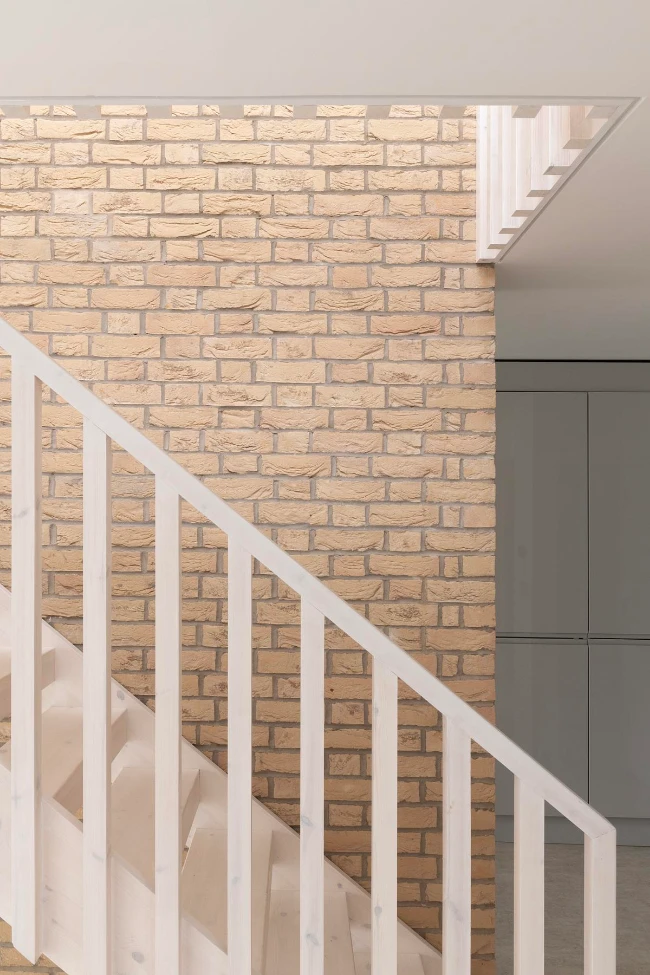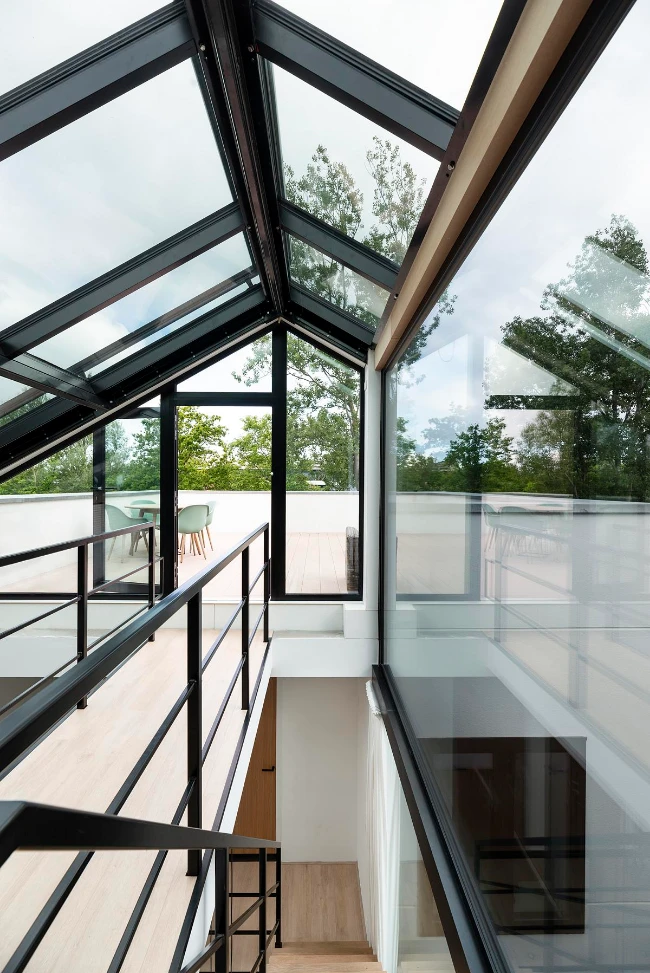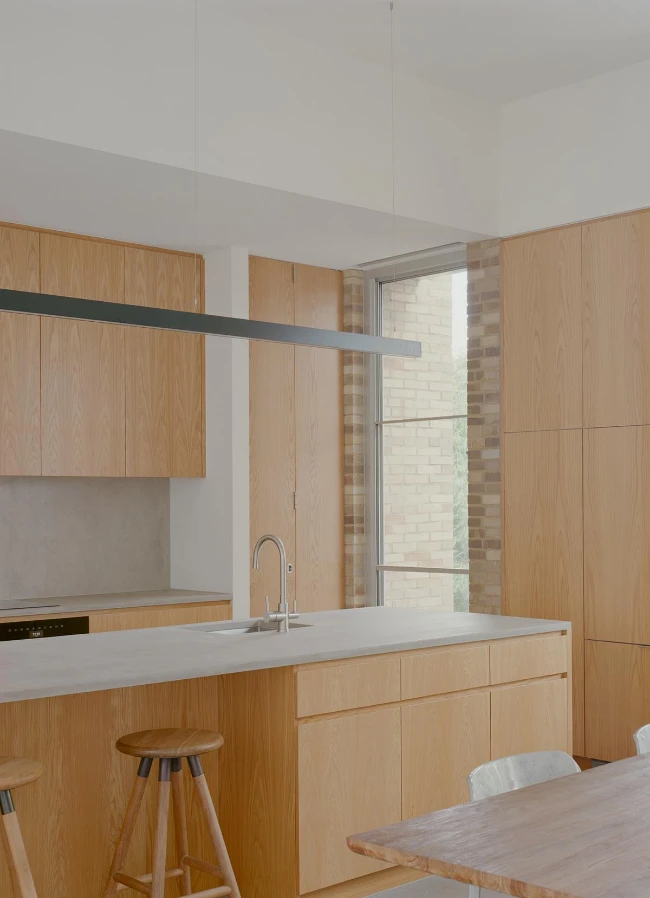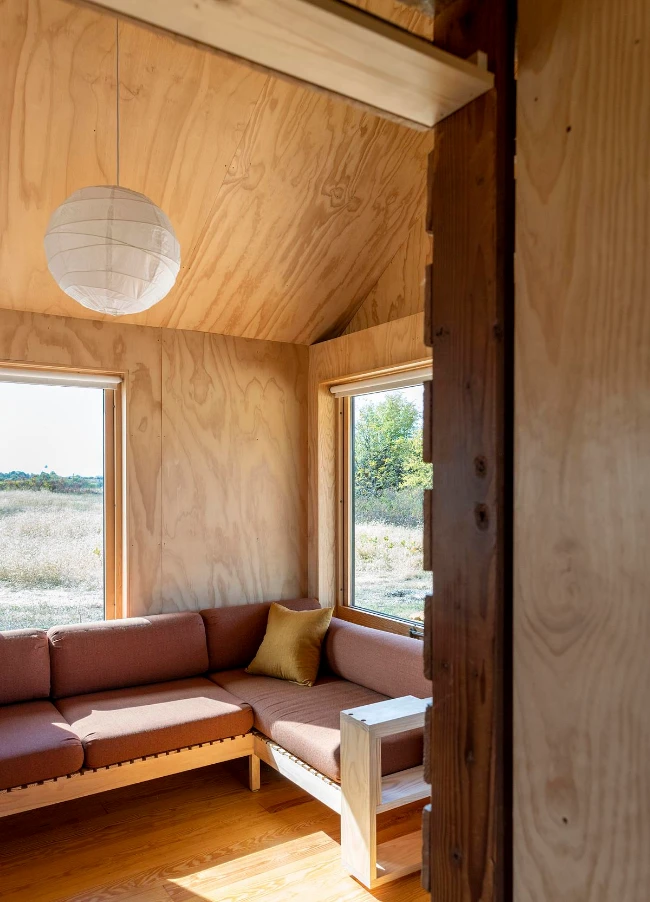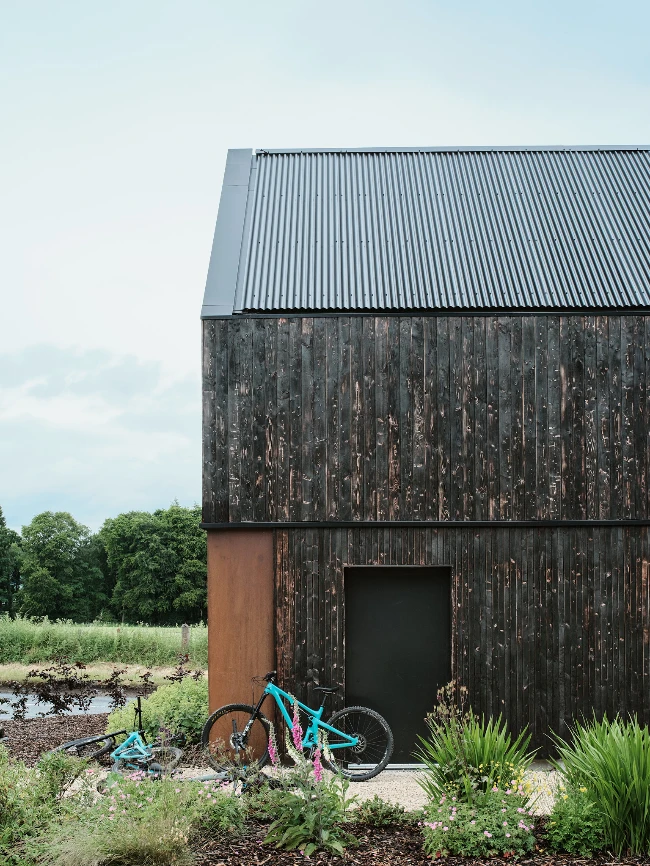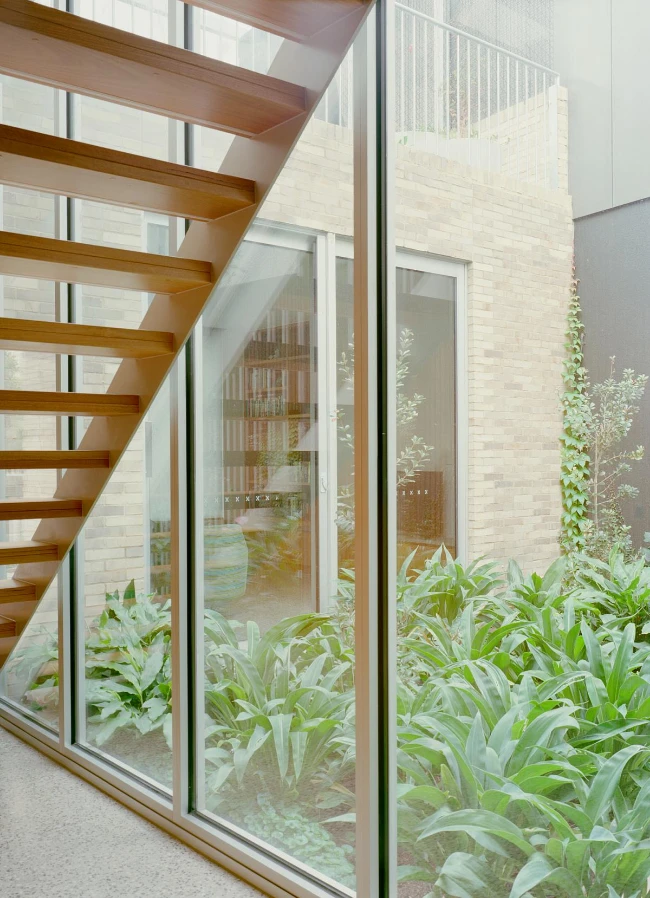
Designing For The Future: Adaptable Homes For Changing Needs
In an era where change is the only constant, the concept of home has evolved beyond its traditional definition. Today’s homeowners seek spaces that reflect their personal style and adapt to their changing needs. This shift in preference has sparked a revolution in home design, prioritizing flexibility, sustainability, and innovation.
Acknowledging this trend, custom home builders have risen to the challenge. They’re crafting homes that promise longevity and adaptability, ensuring a home can grow and change with its inhabitants. Such foresight in design allows for a seamless transition through life’s various stages, making homes future-proof and deeply personal.
Read on to explore how these evolving design principles can transform your living space.
Understanding Flexible Home Design
Flexible home design meets the demands of modern living, accommodating evolving family structures, work habits, and lifestyle preferences with ease. This approach offers solutions that make homes not just places to live but spaces that grow and change with their occupants.
Below are the components that define flexible home design:
- Modular spaces: These are rooms designed to serve multiple purposes with minimal adjustments. For instance, a home office that doubles as a guest room incorporates fold-away furniture or movable partitions to change the space’s function quickly depending on current needs.
- Built-in storage: Creative storage solutions, such as under-stair drawers or platform bed storage, are crucial in minimizing clutter. They offer an organized way to store belongings, allowing for easy reorganization and adaptation to changing life stages without adding external storage units.
- Outdoor connectivity: Designs that emphasize a smooth transition between indoor and outdoor spaces not only expand the livable area of a home but also promote a healthier lifestyle. Large sliding doors, covered patios, and outdoor kitchens encourage more time spent in natural settings, seamlessly blending the comforts of home with the beauty of the outdoors.
Flexible design principles make homes adaptable for the future, ensuring functionality, comfort, and relevance over time. This approach embraces modern life’s fluidity, allowing homes to adjust to new circumstances, technologies, and personal changes, making them valuable long-term investments.
Embracing Technology For Smart Living
Integrating technology into home design revolutionizes how we experience comfort, security, and efficiency. Innovations now allow homes to anticipate and meet our needs with unprecedented precision, transforming them into spaces that are not only livable but intuitively responsive.
Below are the innovations shaping the future of living:
- Smart home systems: These systems represent the pinnacle of home automation, offering control over lighting, heating, and security with a simple voice command or a tap on a smartphone. They adapt to your daily routines, making your home more energy-efficient and providing peace of mind whether you’re at home or away.
- Energy efficiency: Advances like solar panels and smart thermostats are at the forefront of reducing household energy consumption. Solar panels harness the sun’s power, cutting down on electricity bills, while smart thermostats learn your temperature preferences for different times of the day, ensuring comfort without waste.
- Health and wellness features: The home’s environment directly influences your well-being. Air and water purification systems work silently to remove contaminants. At the same time, circadian lighting adjusts the color and intensity of indoor lighting to match the natural light cycle, promoting better sleep patterns and overall health.
Integrating technology into home design goes beyond convenience. It’s about fostering environments that enhance well-being, efficiency, and safety. Embracing these advancements ensures that our homes align with our digital lifestyle, providing comfort, refuge, and sustainability in the modern age.
Prioritizing Sustainability And Resilience
In today’s world, designing homes with sustainability and resilience at the core is not merely a choice; it’s imperative for future-proofing our living spaces. These principles ensure that homes minimize their environmental impact and remain safe and durable through adverse conditions.
Below are the strategies that underscore this commitment:
- Eco-friendly materials: Materials like bamboo, recycled steel, and reclaimed wood reduce the environmental footprint of home construction and support healthier indoor air quality. These materials are sustainable and offer durability, contributing to a home’s long-term resilience.
- Energy-efficient construction: Innovative construction methods such as passive solar design, high-quality insulation, and advanced window technologies significantly lower energy consumption. These practices save on utility bills and contribute to a more sustainable planet by reducing greenhouse gas emissions.
- Disaster-resilient features: Implementing design elements like storm-resistant windows, elevated structures in flood-prone areas, and fire-resistant materials can protect homes from natural disasters. This foresight ensures that homes are sustainable and secure sanctuaries against climate-related challenges.
Incorporating sustainability and resilience into home design addresses environmental concerns while ensuring durability. This approach conserves resources, reduces waste, and provides peace of mind amid climate change challenges.
Planning For Multi-Generational Living
As the fabric of family life transforms, homes must evolve to support multi-generational living. This design philosophy ensures that spaces are versatile and inclusive, catering to the unique needs of each family member, regardless of age or mobility.
Here are the essential components for accommodating multi-generational families:
- Private suites: Designing separate living quarters for different generations allows for privacy while maintaining a sense of connection. These suites often include a small kitchenette, a private bathroom, and sometimes a separate entrance, providing independence without isolation.
- Accessible design: Incorporating universal design principles guarantees that homes are accessible to individuals of all ages and physical capabilities. Characteristics such as level entries, wider doorways, and lever-style door handles facilitate movement within the home for both young children and elderly individuals who may require mobility assistance.
- Shared spaces: Designing communal areas that encourage interaction and bonding is vital to fostering a supportive family environment. Open-plan living areas, large dining spaces, and outdoor gathering spots are designed to be flexible, accommodating family activities ranging from meals to celebrations.
Multi-generational living demands careful planning to balance privacy, togetherness, accessibility, style, and individual needs. Homes can foster family harmony and support across generations by prioritizing these aspects.
Designing With Nature In Mind
Integrating nature into home design enhances a space’s aesthetic appeal and promotes the well-being of its inhabitants. This approach creates a seamless blend between the indoors and the outdoors, making nature an integral part of daily living.
Below are the strategies for harmonizing home design with nature:
- Natural light maximization: By incorporating large windows, skylights, and strategically placed mirrors, homes can capture natural light more effectively, reducing the dependence on artificial lighting. This saves energy and creates warm, inviting spaces that change mood and appearance with the time of day.
- Indoor plants and green spaces: Bringing greenery inside with indoor plants, living walls, or even small indoor gardens improves air quality and adds a touch of nature to the interior decor. These elements can reduce stress, enhance mood, and connect the indoors with the outdoor environment in a very tangible way.
- Sustainable landscaping: Emphasizing native plants in garden design supports local ecosystems and requires less water and maintenance. Features like rain gardens and permeable paving can manage stormwater sustainably, aligning the home with its natural surroundings.
Designing with nature in mind goes beyond aesthetics; it’s about creating spaces that boost health, comfort, and sustainability. These homes merge indoor and outdoor living, providing a serene environment aligned with nature’s rhythms.
Fostering Community And Connectivity
In a time when digital screens often replace face-to-face interactions, the design of our homes can play a pivotal role in fostering a sense of community and connectivity. Thoughtful design can transform living spaces into social interaction and mutual support hubs, reinforcing the bonds between neighbors and family members.
Here are the essential features for nurturing community ties:
- Common recreational areas: Spaces like communal gardens, shared rooftops, or courtyards are the heart of community interaction. These areas are designed to be inviting, with seating arrangements encouraging conversation and activities that unite people, such as community gardening or outdoor movie nights.
- Flexible community spaces: Multi-purpose rooms that host various events, from workshops and meetings to yoga classes and celebrations, strengthen community bonds. These spaces are adaptable, with movable furniture and equipment that can be rearranged to suit different gatherings, promoting a shared use and engagement culture.
- Tech-enabled communication: Integrating technology to foster communication among residents enhances the sense of community within residential areas. Digital bulletin boards, community apps, or social media groups dedicated to the neighborhood allow for easy organization of events, sharing of resources, and dissemination of important information, making it simpler for residents to connect and collaborate.
Designing homes and communities with shared spaces and technology-driven communication fosters a connected living environment. Prioritizing these aspects creates spaces that meet individual needs while promoting a sense of belonging and community engagement.
Enhancing Home Office And Learning Spaces
With the surge in remote work and e-learning, the demand for dedicated home offices and learning spaces has never been higher. These areas are no longer just a luxury but a necessity for many, requiring thoughtful design to ensure they meet the needs of users of all ages.
Here are the key considerations for creating effective work and study environments at home:
- Ergonomic design: The cornerstone of any productive workspace is comfort. Selecting adjustable chairs, desks, and monitor stands can prevent strain and support various body types and work styles. Ergonomics extends beyond furniture to the layout of the space, ensuring everything is within easy reach and at a comfortable viewing level.
- Soundproofing: Distractions can significantly hinder focus, making soundproofing an essential element of home office and learning area design. Techniques include using rugs and carpets to absorb sound, installing acoustic panels, and choosing solid doors to keep external noise at bay. These measures help create a quiet environment conducive to concentration and productivity.
- Technology integration: A seamless tech setup is crucial in today’s digital age. This involves more than just having a high-speed internet connection. It means incorporating sufficient power outlets, built-in charging stations, and even smart home technology to control lighting and temperature, creating an environment that enhances productivity and learning.
Well-designed home offices and learning spaces are crucial in today’s evolving work and education landscape. Prioritizing ergonomic design, soundproofing, and technology integration ensures environments supporting functionality and well-being.
Conclusion
As society adapts to modern living changes, home design evolves to meet diverse needs. With flexible design, technology, sustainability, multi-generational planning, nature integration, community focus, and improved work and learning spaces, homes become adaptable sanctuaries. These principles prepare homes for the future, ensuring they remain versatile and dynamic to support varied lifestyles.

